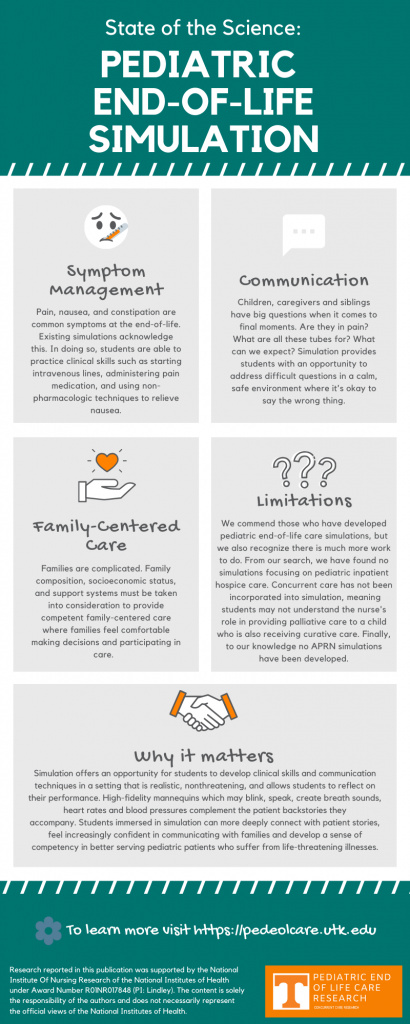Summary
Simulation offers an opportunity for nursing students to develop clinical skills and communication techniques in a setting that is realistic, nonthreatening, and allows students to reflect on their performance. High-fidelity mannequins, which may blink, speak, create breath sounds, heart rates and blood pressures, complement the patient backstories they accompany. However, after reviewing the state of the science in end-of-life simulation, it appears that palliative, hospice and end-of-life care are not often offered in undergraduate nursing curriculums in the United States. More so, apart from a few pilot studies, it appears even fewer programs offer pediatric end-of-life simulations. Death is often left to be an endnote in traditional nursing lecture courses, if it is mentioned at all. Because of this, nursing students may feel they lack the ability to communicate effectively with those who suffer from life-limiting illnesses. Although students may be able to address common symptoms including nausea, pain, and constipation, they may be unable to address the patient’s psychosocial concerns or goals.1 This report addresses a variety of simulation topics including end-of-life care, pediatric end-of-life care, palliative care communications skills, and inter-professional palliative care, while also addressing gaps and recommendations in addressing pediatric palliative, hospice, and concurrent hospice care simulation for undergraduate nursing students specifically. This report will discuss the five simulations that are available for nursing students.
A new infographic on the state of the science of pediatric end of life care simulations has been created to walk through key points. Read more:

